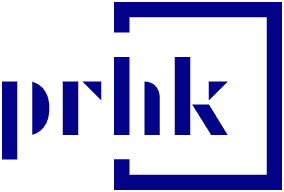PRHK Viewpoints: COVID-19 has taught Hong Kong PR how to rebound and reapply
I recently took part in a panel discussion hosted by PRHK focused on maintaining communications throughout the COVID-19 crisis.
Hong Kong is undoubtedly one of the best places to have that discussion as we arguably have more experience in handling disease and its disruption than practitioners in many other parts of the world. I’ve been tapped for that experience by clients as widely dispersed as Hong Kong, Singapore, Tokyo and Idaho, over the past two-and-a-bit months.
Responding to the novel coronavirus, past comms plans from the SARS and subsequent Swine Flu crises may have covered the fundamentals but there’s need for a refresh in today’s much more digitally connected world. Experience from 2019’s protest movement also helped inform that process. In fact, for communicators, public health and protests have got a lot more in common than you might realise at first glance.
Both are examples of sustained evolving disruption; long-lasting crises (with no sudden onset) that originate outside of an organisation and have a profound, potentially irreversible, impact on consumer or stakeholder behaviour that – for good or ill – ultimately has a material impact on brand and business performance.
After watching it for months from afar, countries like Spain and the U.S are now fully immersed in the COVID-19 crisis. But at this point, Hong Kong already has nine months of evolving disruption experience from the combined effects of protests and the coronavirus strain. And you can extend that timeline longer if you also recognise the slow-burn impact of the China-US trade war.
These coalescing influences demonstrate that learning how to handle COVID-19 offers much more than knowing how to respond to a public health crisis. There is much knowledge to reapply here.
For instance, ask any Californian who was housebound for weeks during the 2019 bush fire season and they will recognise the connection between evolving disruption and climate change. Reapplied locally, you’ll see how those working in any part of the food sector right here in Hong Kong are witnessing the growing momentum against single-use plastic and the rise of environmentally conscious vegetarianism and veganism.
One common (but not entirely universal) feature of evolving crises is the release when it happens is swift like a rubber band. This means it is critical to not stop communicating through the crisis and the initial response phase must incorporate time for planning a rebound strategy. In tough times like these, brands need to be proactive and creative in maintaining their relevance with their audiences or risk being left behind as attitudes shift. Put simply, bear markets need smart toolkits, like the kind recently launched by my Omnicom cousins at TBWA\Hong Kong.
Six years passed between SARS and the Swine Flu pandemic and then a further 10 between Swine Flu and COVID-19. Personally, I don’t want or need another pandemic in my life ever again. But I am pretty sure that I’m going to witness several – possibly many – more phases of evolving disruption. From recent experience, I feel I’m better prepared now than ever before.

Simeon Mellalieu, partner, client development Asia-Pacific for Ketchum and honorary secretary of PRHK. PRHK Viewpoints is an article series contributed by members of PRHK, Hong Kong’s PR & communications association.

